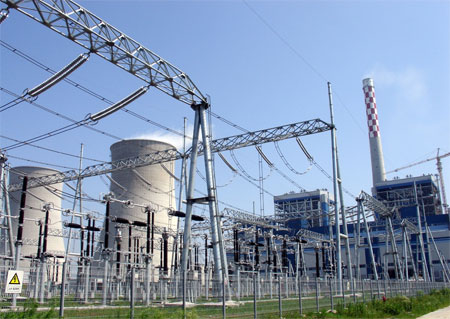 With the implementation of the abandonment nuclear policy, Germany has begun to face an embarrassing situation: the proportion of thermal power generation has risen, and the amount of carbon dioxide emissions has increased.
With the implementation of the abandonment nuclear policy, Germany has begun to face an embarrassing situation: the proportion of thermal power generation has risen, and the amount of carbon dioxide emissions has increased. Statistics show that the largest coal-fired power plant in Germany, the largest energy company in Germany, saw a 10% increase in coal-fired power generation in the first half of the year. The second-largest German power company RWE has also increased its coal-fired thermal power by 12% year-on-year. Since the outbreak of the nuclear crisis in Japan, German Chancellor Angela Merkel announced the gradual closure of domestic nuclear reactors, Germany's domestic coal consumption increased by 4.9% year-on-year.
The increase in coal-fired thermal power generation and the low carbon emission of gas-fired thermal power have been a background that has been hampered by the rise in natural gas prices and the fall in the price of carbon dioxide emissions. If we consider the total cost including the cost of emission rights, gas fired power stations will lose 10 euros for every 1000 kilowatt-hours of electricity due to rising natural gas prices. On the other hand, the price of CO2 emission rights has fallen by 43% in the past year, and the cost competitiveness of relatively cheap coal-fired thermal power generation has increased. Wind power generation and solar power generation are difficult to guarantee stable power supply.
The implementation of a nuclear abandonment policy directly leads to an increase in coal-fired thermal power generation. RWE has officially launched a lignite-fired power station using the latest technology in the suburbs of Cologne. The efficiency of electricity generation can reach 43%. In response, the German Environment Minister Altemmeier appreciated that the power station not only promoted emission reduction but also succeeded in energy. The conversion has made a great contribution, but the drawbacks of having more carbon emissions have not changed. It is alleged that the German government plans to add 10 million kilowatts of thermal power plants by 2020 in order to compensate for the lack of wind and solar power.
Heat Resistant Braided Sleeving
Expandable braided sleeves is ideal for a limitless number of electronic, automotive, marine and industrial wire management and bundling applications. Examples include engine compartment dress up, home theater wire management, customizing computer case wiring, office wire management, automotive harnesses, scuba hose protection, and many more. Threads of different colors and textures could be braided into different patterns. Each of our products is tailored to the client's business and needs.
PET polyester Expandable Braided Sleeving is flame-retardant and halogen-free. It offers durable abrasion resistance in a wide range of industrial applications. The open weave construction allows an easy installation on a bundle of hoses and cables, even if some with bulky or large connectors.
Totally expanded the sleeving can reach at least one point five times than the initial dimension.
PET expandable braided sleeve compiled by the Environmental Protection PET filament diameter monofilament 0.20mm or 0.25mm's made with good flexibility, flame resistance, abrasion resistance and heat resistance, network management can be easily expanded to the original 150% , and it is easy to tighten the various irregularly shaped objects, which can be maintained within a wide temperature range while maintaining a soft, can inhibit chemical corrosion, UV and friction, characterized by its unique mesh also has good ventilation, wire heat diffusion function in a timely manner.
Pet Braided Cable Sleeve,Expandable Braided Sleeving ,Expandable Wire Sleeve For Cable,Braided Expandable Sleeve
Shenzhen Huiyunhai Tech.Co.,Ltd , https://www.hyhbraidedsleeve.com